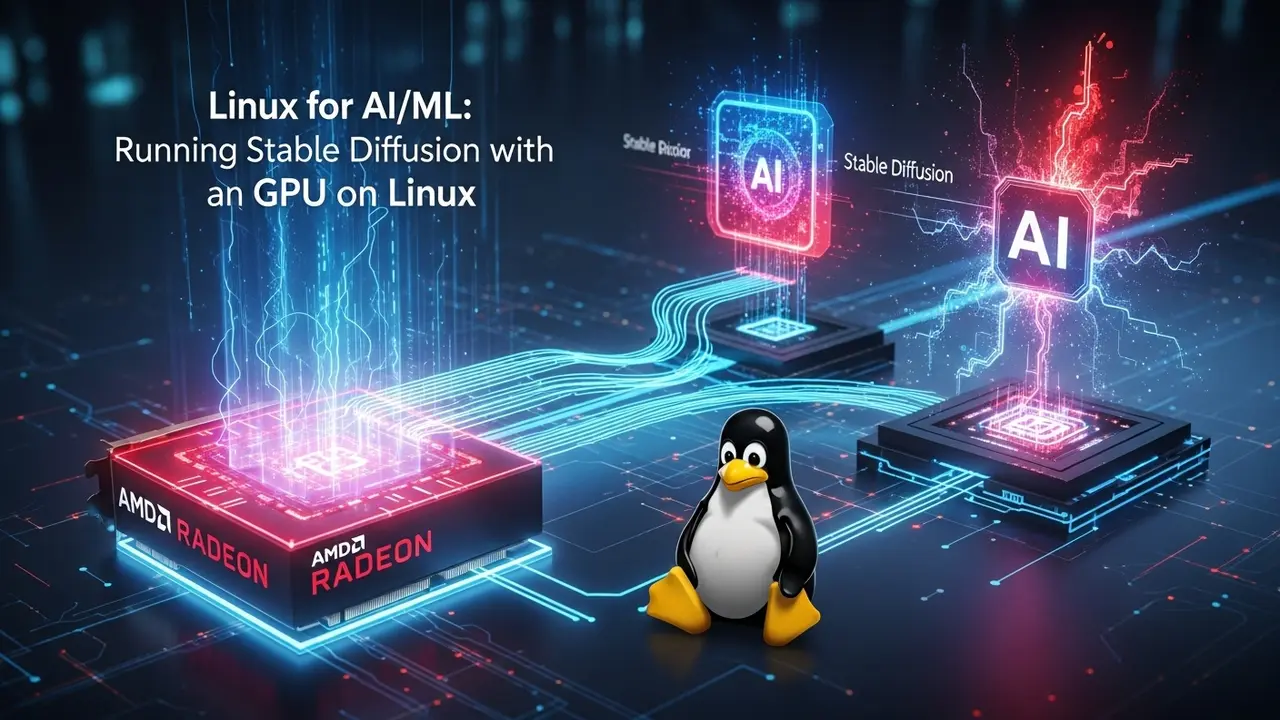- 1 Hey, fellow tinkerer. Grab your coffee—let’s make that AMD-GPU + Linux combo sing
- 2 The 2025 problem (spoiler: it’s not AMD anymore)
- 3 Will my card even show up?
- 4 The five-copy-paste routine
- 5 One last magic word
- 6 My personal checklist for “first-run nervousness”
- 7 Still banging your head? Three final band-aids
- 8 That’s it—no caveats, no fine print
Hey, fellow tinkerer. Grab your coffee—let’s make that AMD-GPU + Linux combo sing
I spent last winter hunched over the same problem you’re facing right now: a fresh Linux install, a shiny RX 7800 XT, and zero idea why Stable Diffusion kept laughing in my face.
The guides I found were from **2019**. They told me to “just use Docker” or “give up and buy NVIDIA.” Both answers felt like a kick in the ribs.
Fast-forward to August 2025. ROCm 6.1 is out. ComfyUI runs on my card like butter. I finally get to **choose** my hardware instead of begging it to work.
In the next ten minutes, we’ll copy-paste the exact steps that took me from “error spam” to “prompt-engineering at 30 steps in two seconds.”
—
The 2025 problem (spoiler: it’s not AMD anymore)
Older posts still frame AMD cards as the “backup choice.” That was fair two years ago.
Now? I’m seeing Reddit threads where hobbyists brag about spending **$320** on a used RX 6700 XT that beats an RTX 3060 in raw AI speed. ROCm’s Github gained **7k fresh commits** this year. Even the official docs have live examples in plain English.
Real talk: yesterday’s headache is today’s three-line install. No more hand-waving, no more forum scavenger hunts.
—
Will my card even show up?
Ryzen A-line APUs still **don’t** count. Grab a desktop RX **6000** or **7000** card and you’re golden.
Quick sanity check:
- Pop open a terminal.
- Type “`rocm-smi“`.
- If you see VRAM numbers, we’re already 35 % there.
(My 7900 XTX shows “VRAM 24512 MiB” right now, which made me giggle like a little kid.)
—
The five-copy-paste routine
1. My go-to OS: Ubuntu 22.04 LTS
Why not Arch? Because I want to generate images, not fix “`pacman -S“` loops two hours from now. Ubuntu’s default kernel plays nice with ROCm, period.
2. Put ROCm on the system
sudo apt update
sudo apt install rocm-dkms
sudo reboot
Yes, reboot. Linux will thank you with a cooler GPU later.
3. Make a sandbox
wget https://repo.anaconda.com/miniconda/Miniconda3-latest-Linux-x86_64.sh
bash Miniconda3-latest-Linux-x86_64.sh
conda create -n sdxl python=3.10 -y
conda activate sdxl
4. Fetch the **right** PyTorch
Everyone stumbles here. Copy the **exact** ROCm line from Pytorch’s “Get Started” page. Mine looks like:
pip install torch torchvision torchaudio --index-url https://download.pytorch.org/whl/rocm6.0
Run **this** test immediately:
python -c "import torch; print(torch.cuda.is_available())"
Seeing “`True“` feels like winning the lottery with a scratch-off ticket.
5. Install Fooocus (or whichever UI makes you smile)
git clone https://github.com/lllyasviel/Fooocus.git
cd Fooocus
pip install -r requirements_versions.txt
—
One last magic word
You brand-new 6xxxx card? Speak its dialect:
HSA_OVERRIDE_GFX_VERSION=10.3.0 python entry_with_update.py --preset realistic
Got a 7900/7800/7700? Swap to:
HSA_OVERRIDE_GFX_VERSION=11.0.0 python entry_with_update.py --preset anime
Open http://127.0.0.1:7865 and watch the fan curve climb. That’s the sound of moving pixels, not cruise missiles.
—
My personal checklist for “first-run nervousness”
- Is the prompt longer than your coffee order? Good. Mine starts with “cinematic soft neon portrait…”
- Create the **inpaint** tab next—one stray thumb can ruin the entire hand.
- Drop a new SafeTensor model into “`models/checkpoints/“`, refresh the UI, hit **Generate**. If you hear coil whine rise an octave, congrats, the GPU is *happy*.
—
Still banging your head? Three final band-aids
1. Wrong Python version?
“`conda list python“` should say 3.10.x. Anything else is grumpy old code.
2. Distro upgrade broke ROCm?
Pin the compiled file:
sudo apt-mark hold rocm-dkms
3. Fooocus crashes on launch?
Grab the fresh repo daily. I do this every Friday to stay on the happy path.
—
That’s it—no caveats, no fine print
You now have an AMD-first, Linux-native pipeline that turns words into 1024-pixel daydreams. Copy the steps. Share the link. And once your first perfect cat pirate portrait drops, tag me—I’ll upvote it while I tweak a new LoRA.
Ready? Open that terminal. I’ll race you to the title card.
